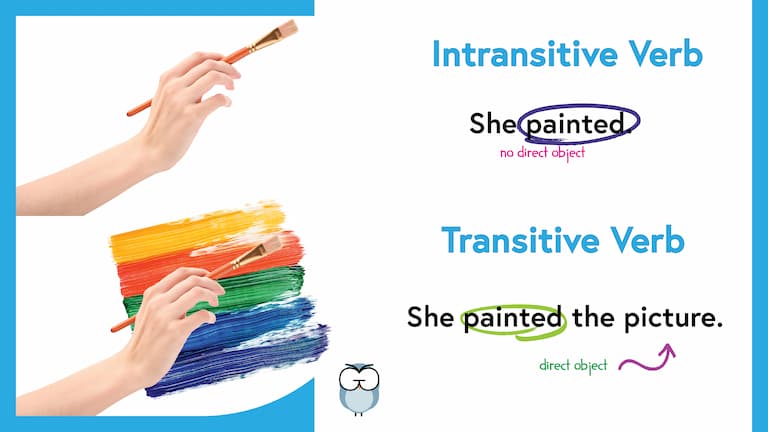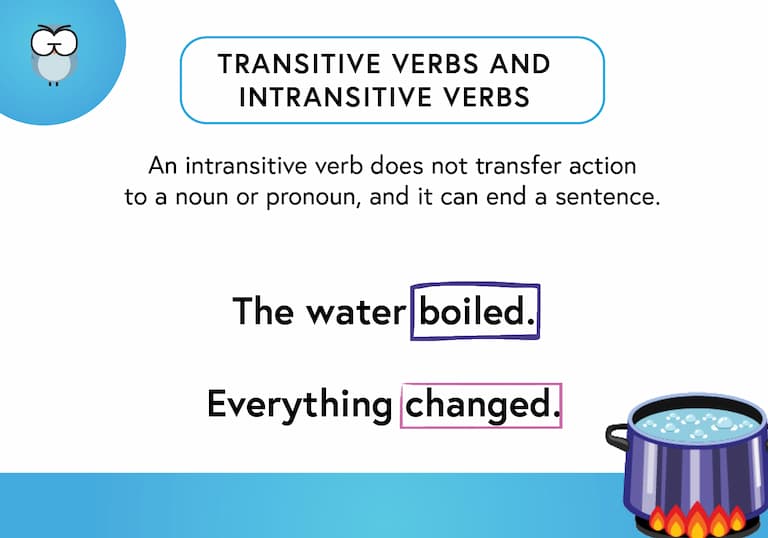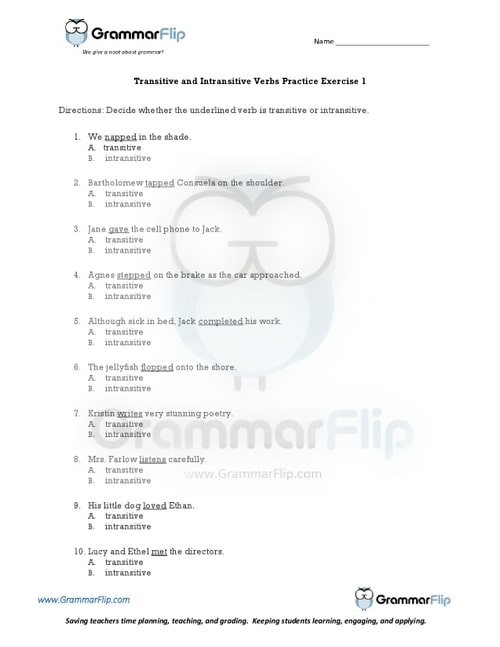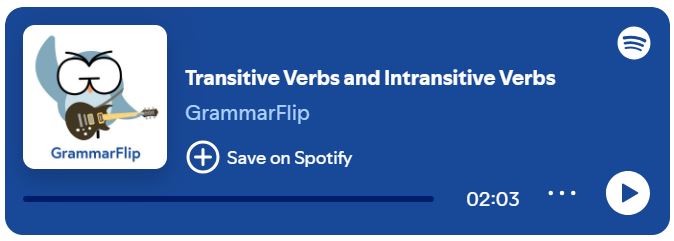What is an Intransitive Verb?
An intransitive verb does not transfer action to a noun or pronoun, and it can end a sentence.
Some examples of intransitive verbs would be the following:
The water boiled.
Everything changed.
The silverware rattled in the drawer.
Zoe’s kitten purred softly.
Long-Form Videos: Intransitive Verbs
Long-form instructional video lessons allow students to engage with grammar concepts in more depth and detail.
This format provides students with a stronger foundation and a more comprehensive understanding of intransitive verbs.
Grammar-in-Context Videos: Intransitive Verbs
GrammarFlip’s grammar-in-context videos provide an additional layer of instruction, learning, and relatability.
Our unique and memorable video footage helps solidify the understanding of challenging grammar concepts.
Watch this video to better understand intransitive verbs!
Short-Form Videos: Intransitive Verbs
Short-form videos are an excellent way to review grammar concepts. Our two-minute instructional videos help students review the concept of intransitive verbs to further solidify their understanding.
Memorable Images: Intransitive Verbs
The use of images to connect visual cues with concepts makes it simpler for students to grasp and remember key ideas. GrammarFlip’s memorable images create visual associations that make intransitive verbs more engaging and easier to retain.

Definition Cards: Intransitive Verbs

Definition cards reinforce grammar concepts by providing clear and concise explanations that students can easily reference for quick review and better retention. GrammarFlip’s definintion cards help students review the concept of intransitive verbs to further solidify their understanding.
Music: Intransitive Verbs
Learn grammar concepts through music! The unique verses and catchy chorus in our “Transitive Verbs and Intransitive Verbs Song” will help your students further understand intransitive verbs. Listen for yourself and see if you don’t walk away singing this song to yourself!
Listen to GrammarFlip Music via Spotify, Apple, or Amazon!
Music Videos: Intransitive Verbs
Music videos make grammar concepts more engaging and memorable by combining rhythm, visuals, and repetition to reinforce learning. GrammarFlip’s music videos help students retain the concept of intransitive verbs more effectively while making the learning process fun and interactive.
When You Should Use Intransitive Verbs in Your Writing
If you’re looking for simplicity in your writing with minimal detail, intransitive verbs (as opposed to transitive verbs) are the way to go. Maybe it’s your preference of writing style or maybe it’s your audience that requires it, but intransitive verbs can be a simple and straightforward way of communicating.
This, of course, may be a dramatic example to prove the point, but consider the drill sergeant asking a private if he or she ate dinner. How would he or she respond?
Yes, I ate.
Yes, I ate the turkey sandwich on rye with melted provolone, lettuce, tomato, a hint of spicy mayo, and some honey mustard.
Get the idea? Intransitive verbs allow you to be simple, exact, and to the point.
Download a Free Worksheet on Intransitive Verbs!
Click the image below to download your free worksheet on intransitive verbs!

Do your students understand the difference between transitive and intransitive verbs?
Explore More GrammarFlip Lessons!
Parts of Speech lessons provide the building blocks of grammar. GrammarFlip covers these topics in detail to ensure a solid foundation is built. First time learners and students seeking to review the parts of speech can both benefit from the instructional videos and slide show reviews.
Parts of the Sentence lessons are critical for understanding how the parts of speech function in language construction. From the basic to the advanced, these lessons will cover a wide range of grammar topics that can be used in any grade level or classroom.
Mechanics and Usage lessons equip students with the necessary skills to communicate clearly to all audiences. With a focus on the application of these concepts in student writing, these lessons tie together both simple constructions of grammar as well as the more complex such that any age or skill level of student will benefit.



